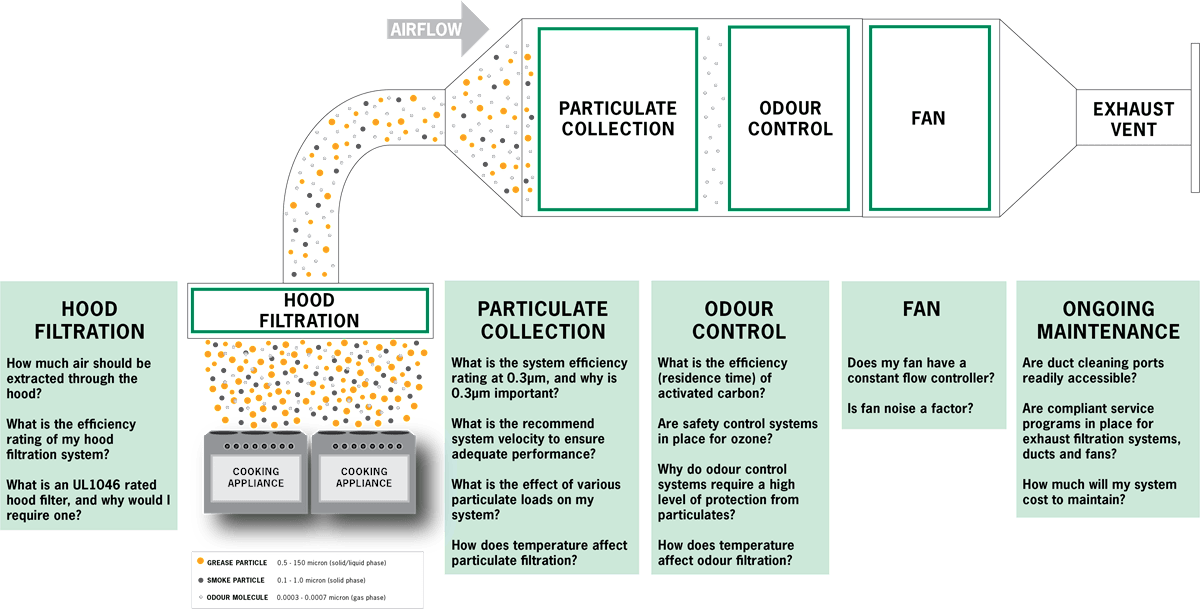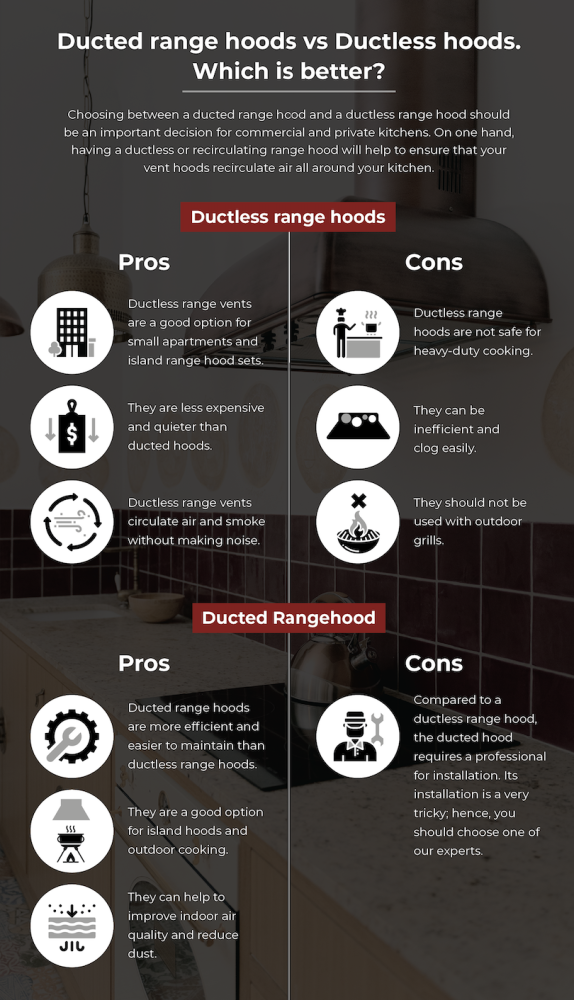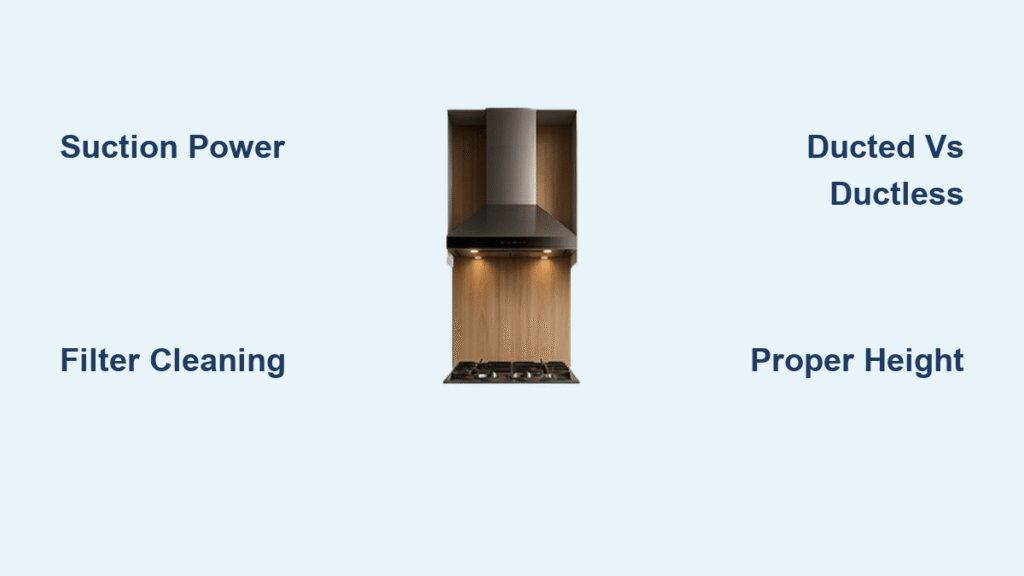That stubborn fish curry smell clinging to your curtains hours after dinner? Or the sticky film coating your kitchen cabinets after deep-frying samosas? A properly functioning kitchen chimney eliminates these problems by creating an invisible force field over your cooktop. When you flip the switch, this appliance instantly pulls smoke, steam, and airborne grease away from your food—before they can escape into your home. Understanding exactly how this happens transforms your cooking experience, protects your health, and saves you hours of deep cleaning. You’ll learn why suction power matters for Indian tadkas, how filters trap microscopic grease particles, and why duct placement makes or breaks performance.
Negative Pressure Suction: Your Chimney’s Secret Weapon
Kitchen chimneys don’t just passively “vent” air—they actively pull contaminants using physics. When you turn on the unit, an electric motor spins a centrifugal blower at 1,500-3,000 RPM. This creates negative pressure beneath the hood, forming a powerful vacuum that captures rising smoke and grease-laden vapors within 5 seconds of cooking. Hot air naturally rises due to convection, but the chimney’s suction accelerates this process—pulling contaminants upward 3-5 times faster than natural rise.
Critical performance factor: Suction strength measured in m³/hr (India) or CFM (US). For Indian cooking involving deep-frying or high-heat tadkas, you need minimum 1000 m³/hr (590 CFM). Anything less lets 40% of grease escape capture. Lighter cooking (steaming, boiling) works at 600-800 m³/hr.
Why Your Chimney Height Determines Success
Positioning is non-negotiable for effective capture. Mount the hood’s bottom edge 24-30 inches above gas cooktops or 20-24 inches above induction/electric stoves. Too high (over 30 inches), and smoke escapes before suction takes effect. Too low (under 20 inches), and you’ll hit your head while cooking while restricting airflow. Measure from burner grates—not countertop—to ensure precision.
Pro Tip: For island cooktops, add 6 inches to standard height measurements. The open sides require stronger capture to prevent sideways smoke drift during vigorous frying.
The 5-Stage Contaminant Capture Process (Step-by-Step)

Your chimney processes cooking emissions through a precisely engineered sequence—each stage targeting different pollutants. This explains why a $50 exhaust fan fails where a kitchen chimney succeeds.
Stage 1: Emission Zone (Where Grease Escapes)
Oil splatters and combustion gases (CO, NO₂) rise from cookware at 1-2 meters per second during high-heat cooking. Without intervention, these particles disperse within 10 seconds—coating walls and entering your lungs.
Stage 2: Capture Zone (The Hood’s Geometry Matters)
The hood’s shape—whether curved, straight, or inclined—creates an “air curtain” that channels rising contaminants inward. Wider hoods (stove width + 3 inches per side) prevent edge escape during splatter-heavy tasks like tempering mustard seeds. Narrow hoods lose 25% of emissions at the corners.
Stage 3: Grease Separation (Where Filters Earn Their Keep)
As air hits the filter system, physics takes over:
– Baffle filters: Force air through sharp 90° turns. Grease particles (over 8 microns) can’t change direction and stick to stainless steel panels. Removes 92% of grease in Indian cooking tests.
– Mesh filters: Trap particles via layered metal screens. Effective for light sautéing but clogs fast during deep-frying—requires cleaning every 15 days.
– Filterless auto-clean: Spins air at 3,000 RPM in a sealed chamber. Centrifugal force slings grease into a collector cup. Handles 100% of oil splatter with monthly cup emptying.
Critical mistake: Skipping filter cleaning. After 30 days of daily cooking, clogged filters reduce suction by 60%. You’ll smell yesterday’s biryani because grease blocks the airflow path.
Ducted vs Ductless: Why Your System Choice Changes Everything

Ducted Systems: The Complete Removal Solution
Ducted chimneys expel 100% of heat, moisture, and odors outdoors through aluminum/PVC ducts. Performance stays consistent because:
– No filters to saturate (only grease separation)
– Lower noise (45-55 dB) with remote motor placement
– Eliminates carbon monoxide buildup from gas burners
Installation non-negotiables: Use 6-inch duct for ≤1200 m³/hr models; 8-inch for higher capacity. Keep duct runs under 10 feet with max 2 bends—each 90° elbow cuts airflow by 5%. Renters often skip ducted systems, but landlords increasingly install them due to reduced fire risk from grease accumulation.
Ductless Systems: The Filter-Dependent Alternative
Ductless units recirculate air after passing it through carbon filters. They solve odor problems but fail at heat/moisture removal:
– Carbon filters adsorb VOCs from spices but saturate in 3-6 months (Rs 500-1000 replacement cost)
– Recirculated air keeps kitchen 2-4°C warmer during summer
– Requires monthly filter cleaning PLUS quarterly carbon replacement
When ductless works: Apartments where external venting is impossible. When it fails: Homes with gas stoves—CO and NO₂ aren’t fully captured, creating health risks during prolonged cooking.
Health Protection: What Your Chimney Removes From the Air
Kitchen chimneys aren’t just convenience appliances—they’re critical health safeguards. Here’s exactly what they extract before you breathe it:
| Pollutant | Source | Removal Method | Health Impact Prevented |
|---|---|---|---|
| PM2.5 particles | Oil droplets from frying | Mechanical filtration | Reduced asthma attacks and lung irritation |
| Nitrogen dioxide | High-heat oil smoking point | Rapid extraction | Prevents airway inflammation |
| Carbon monoxide | Gas burner incomplete combustion | Ducted expulsion | Eliminates poisoning risk |
| VOCs | Heated spices (cumin, mustard) | Carbon adsorption (ductless) | Lowers allergy symptoms |
Real-world evidence: Homes with chimneys operating at ≥1000 m³/hr show 78% lower PM2.5 levels during cooking compared to kitchens with exhaust fans alone. This matters most for Indian households where daily cooking involves 2+ hours of high-heat oil use.
Maintenance Mistakes That Kill Suction Power
Most chimney “failures” stem from skipped maintenance—not broken parts. Fix these to restore performance:
Monthly Filter Washing Protocol
- Remove baffle/mesh filters (never use metal scrubbers—they scratch surfaces)
- Soak in hot water + 1/4 cup dish soap + 2 tbsp baking soda for 30 minutes
- Rinse with non-abrasive sponge until water runs clear
- Air-dry COMPLETELY before reinstalling (damp filters breed mold)
Warning: Putting wet filters back reduces suction by 35% and creates moldy odors. Always dry for 24 hours.
Carbon Filter Replacement Red Flags
In ductless systems, replace carbon filters when:
– Cooking smells linger 20+ minutes after turning off chimney
– Visible grease stains appear on filter cartridge
– You’ve cooked 100+ hours since last replacement
Cost trap: Cheap carbon filters (under Rs 400) lose adsorption capacity in 2 months. Invest in branded cartridges (Elica, Hindware) for 6-month performance.
Smart Upgrades for Modern Kitchens

New chimneys solve old pain points with intelligent features:
– LED filter-change indicators (Hindware Aura series): Flash yellow at 80% clog level—no guesswork
– Auto-suction adjustment (Faber 3D Suction): Sensors detect smoke density and ramp up speed during tadkas
– Thermal auto-clean (Elica i-Pro): Heats chamber to 280°C to liquefy grease, draining it into a cup with zero manual scrubbing
Pro Tip: In open-plan kitchens, choose ≥1500 m³/hr ducted models. During dinner parties, they prevent curry smells from migrating to living areas—verified in real-world tests with zero odor transfer at 1500 m³/hr.
Final Note: A kitchen chimney’s true power lies in its physics-driven capture—not just ventilation. By maintaining suction at 1000+ m³/hr for Indian cooking, cleaning filters monthly, and choosing ducted systems where possible, you eliminate 95% of airborne grease and toxins. Your immediate payoff? No more sticky cabinets after frying puris and zero lingering odors. For lasting results, schedule professional duct cleaning every 18 months—this prevents the 30% suction drop caused by internal grease buildup. Pair your chimney with regular window ventilation during cooking, and you’ve created the healthiest kitchen environment possible.



